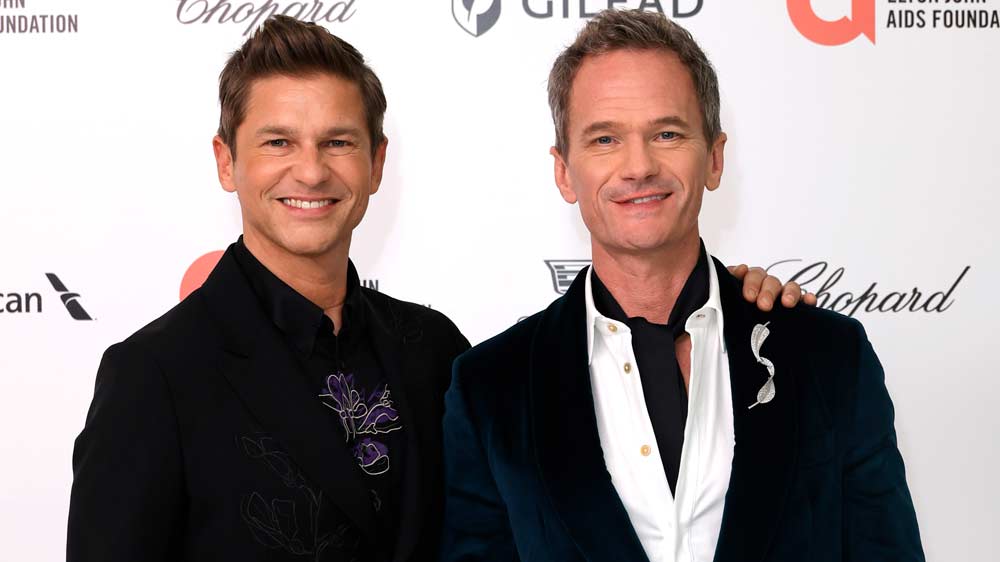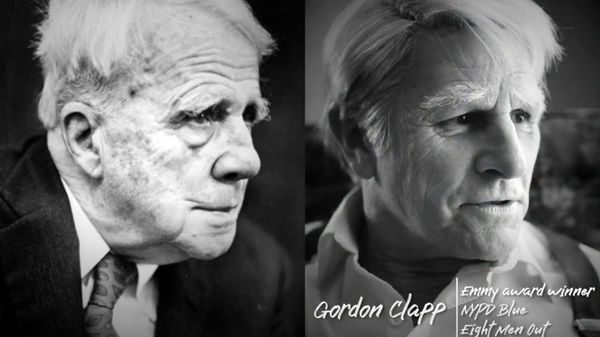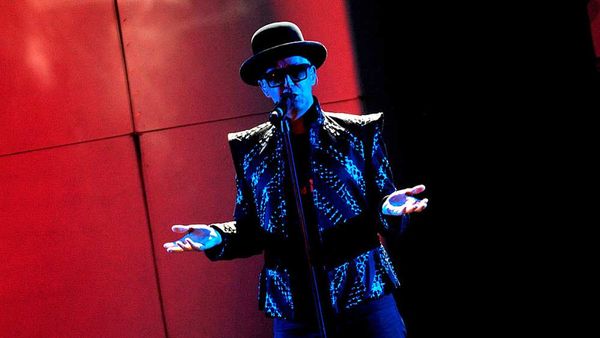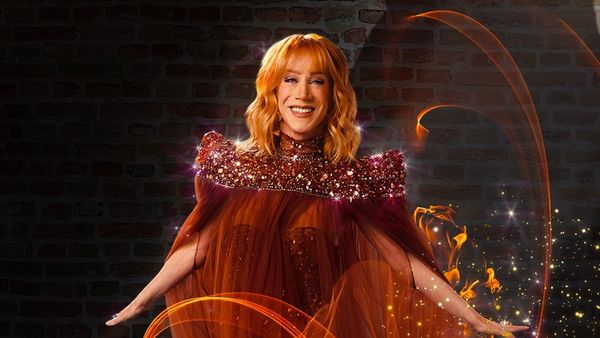October 5, 2009
Getting inked - the inside scoop on gays and tattoos
Scott Stiffler READ TIME: 8 MIN.
Being openly gay is like getting a tattoo. Once the deed is done and you put it out there for the world to see, there's no turning back; except for laser removal and reparative therapy (and while the former may work, the latter is pretty much discredited, unless you're Ted Haggard).
Although hard statistics are elusive, an anecdotal survey recently taken at a mixed straight/gay summertime cookout revealed that a disproportionate number of gay men seem to be owners of inked bodywork. On the other hand, maybe the fact that we'll use any feeble excuse to take our shirts off in public just makes it seem as if we have more tats than the general population.
And why not? The permanence, commitment and bold declaration of a tattoo is a fitting metaphor for men who live out, loud, proud lives in which sexuality is at the forefront of their identity. But as EDGE recently found by talking with tattoo artists whose studios are located in gayborhoods, we've come a long way from the days when pink triangles and rainbow tattoos were all the rage. Happily, we've moved on to a bold new era of snakes on penises, angel wings,"insert here" signs on butt cheeks and, yes, anal tattoos. (Ouch!)
Gays and tattoos - different strokes...
Gauge Strongarm of Gotham Body Piercing & Tattoo (located in San Francisco's Castro) says the shop's gay clientele accounts for more than 60 percent of their business. On the matter of gays and tattoos, Strongarm says, "It depends on which gay men we're talking about. Muscle bears and muscle guys usually get them on upper arm; arm bands-or on the back, shoulder or upper pecs-places where the tattoos are going to be seen when they're walking around with their shirts off."
And the club-oriented tweakers? "They tend to get lower back tattoos, kind of like the teenage girls; tattoos on vanity spots like the butt check or the upper pelvis. The images are small and delicate." Queers who veer to the queeny side get "stuff more on the delicate and girlish side; flowers."
Story continues on next page:
The Camp Factor :: Before the current Ink revival, tattoos were long associated with sailors. In the early 1950s the craze was parodied in this production number from the 20th Century Fox film There's No Business Like Show Business with Ethel Merman and Mitzi Gaynor. Today it is pure camp.
A tasteful aesthetic
But just as one's sexual identity is sometimes hard to define or confirm, it's equally challenging to paint a picture of the gay tattoo customer. Thank heaven, then, for sweeping generalizations: those little nuggets of truth gleaned from highly unreliable (but surprisingly accurate) observations.
Asked to speak about gay men and tattoos in general terms, Rosa notes "In general, the gay male will definitely be very conscious of how it's going to look to another man." It's also generally true that the gay man's abilities in the realm of fashion and tasteful aesthetics makes him a particularly savvy tattoo customer.
"They're very serious about layout and designs," explained Rosa, which I guess, is sexier "than the run-of-the-mill hetero customer."
Rosa also observers a unique trait among the gays that sets them apart from their heterosexual counterparts: an inherent sense of style and aesthetics-and a willingness to collaborate with the tattoo artist. "One of the things, in general, I've always found with the gay population is they tend to be very well-educated." in matters of form and function, "so I really have a good time working with them. If I have an idea, they're a lot more receptive to it. Let's say they want a tribal tattoo, and want it to wrap around the arm. I say I want to put a shadow here so it complements the shape of the arm at a certain point; and they can almost always visualize that."
Tribal and Japanese tattoos have been especially popular in recent years, says Rosa-among the general population. For Gays, he says, tribal work has appeal because it's "an abstract art form that can follow body muscle. It can look good from far away, if he's trying to attract a lover."
But what, besides the fact that it looks good, is the connection American gay men feel to a form of tattooing which has its origins in the Pacific Islands-far away from the continental United States and, seemingly, unrelated to the cultural identity of the modern gay man (apart from the fact that, in a broad sense, being gay is like belonging to a tribe).
"What's so appealing about tribal work," Rosa notes, "is that it has no set connotation or meaning. It's more timeless than, say, getting a picture of a snake or a hawk."
Plus, he notes, it just looks good; and that may be the only reason a gay man needs!
As for the more recent trend of Japanese tattoo work, Rosa says gay men are in tune with the aesthetics of Japanese culture, in so far as "the Japanese have established an art language of designs that will cover large areas of the body. Their art worships nature. Most of their icons have positive meanings, and they believe in high contrast and striking images."
Asked if there's a difference between the old vanguard and the current generation of gays, Strongarm notes "The older ones tend to get more gay-oriented images such as rainbows; but not so much anymore. I've been in this industry 16 years and have not seen anything really shift that much. It always comes down to personality and environment. Some people get a tattoo that is deeply personal; that comes from a spiritual place; whereas people who are followers, what I consider the environmental or social tattoo getters, tend to follow what al their friends are getting. They're following somebody else's trend."
One trend you may have heard of (or may have seen last night?)? "I recently have had a large trend of guys getting their assholes tattooed; things like flames or sunburst." Yes, readers, that's right. The assholes-inside-not just on the butt cheeks. (To some this may bring to mind controversial performance artist Ron Athey and his solo show The Solar Anus which featured the actor displaying the tribal, sunburst tattoo that radiated from his anus, but not even the adventurous Athey has gone this far).
Gay images
Rosa, who says that the generally accepting culture of New York City means less rainbows observing that "young guys say I don't wanna look like a fag" by having such iconic gay images. For the youngest of gays, who may not be completely out (or out at all), Rosa says they "might get a Lambda or something hidden; just to test the waters" of being out or identifying as gay.
Among the older generation, "Guys tend to go for bigger tattoos, and they tend to come in with a partner who plays a decision in the image and the placing of the tattoo-whereas ten years ago, that's something you really didn't see."
Rosa recalls a memorable tattoo he did on ten years ago "on a guy's back. I believe he still lives in Chelsea. It was of two mermen in the middle of foreplay, with giant penises spouting underwater plants." Although the exact meaning of that image is elusive to him, Rosa understands the idea. "I'm a gay man myself. I tend to tattoo what speaks to me. I like to mark occasions, so my body is sort of like a storyboard."
Hard to say what story or occasion inspires one to ink one's self with images of copulating mermen; but it certainly seems as if it would be a great conversation starter.
Paul Booth is the owner of NYC's
Although his eclectic clientele certainly includes gays, Booth says he doesn't pry; but "If it's big work with multiple sittings, you get to know them. My gay clientele is no different than anyone else who comes here."
The common trait? "We deal with a lot of people who are getting tattoos to acknowledge a trauma in their life; whether it's because they are gay, they've been abused or lost a family member. We depict that trauma metaphorically. I encourage people to throw away the first blatant idea, dig deeper, and come up with some art that can be interpreted a number of ways."
On the very day he was interviewed by EDGE, Booth noted that "The guy I'm tattooing today is a friend of mine. It took him years to come out of the closet. He's a bit more reserved, and I think he always worried I'd think less of him if I knew he was gay; but I've known that since I've known him. Hey, I live in New York. What do I care what people do? He's getting the scales of justice; blind justice-which means a lot to him, but it's not necessarily a gay image."
That choice, which isn't overtly gay yet speaks volumes about the internal struggles of a closeted gay man, is a good example of Last Rites' signature style' target='_blank'> the external tattoo as metaphor for internal struggle.
Gay or straight, the clients drawn to Booth's studio are "people who want to depict their dark side; not their evil side, but the demons they have. We're here to pull those demons out and put them on your skin. The depth we work at goes to the core in people, to depict and deal with what's beneath; the struggles in their lives that define them." Body images which touch upon those issues he says, are the most complete realizations of what a tattoo can be: depictions that give the owner "a sense of freedom from persecution. It might be a guy who wants an eagle flying, soaring through the air. It's about self-validation and rising above shit."
Scott Stiffler is a New York City based writer and comedian who has performed stand-up, improv, and sketch comedy. His show, "Sammy's at The Palace. . .at Don't Tell Mama"---a spoof of Liza Minnelli's 2008 NYC performance at The Palace Theatre, recently had a NYC run. He must eat twice his weight in fish every day, or he becomes radioactive.







